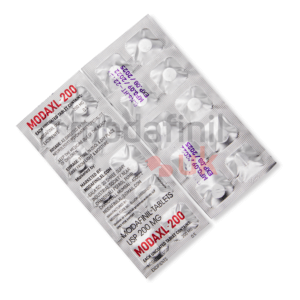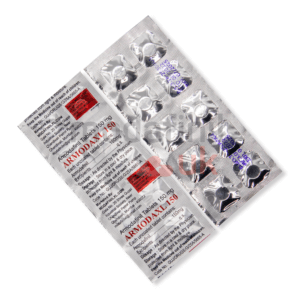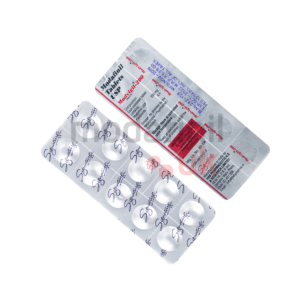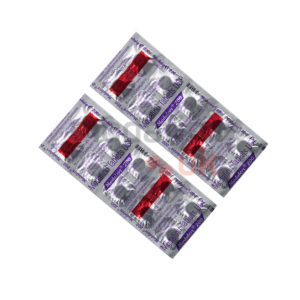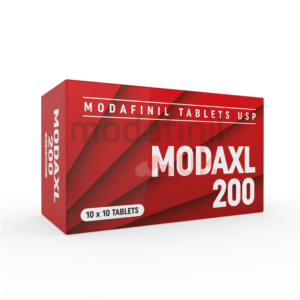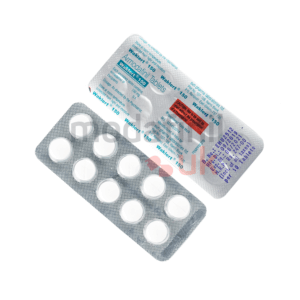Modafinil (Provigil): Now Restricted to Narcolepsy – 2025 Update
In recent years, modafinil has garnered attention for its comparison to the fictional drug NZT-48, portrayed in the film “Limitless,” for its purported cognitive-augmenting effects. While modafinil doesn’t offer the extreme cognitive abilities depicted in the film, its ability to promote wakefulness and increase brainpower has led to its off-label use as a “smart drug” or nootropic. But are nootropics legal in the UK? Indeed, modafinil has been a popular drug for treating sleep disorder conditions such as narcolepsy. However, the recent regulatory changes have narrowed its scope to narcolepsy treatment exclusively in the UK. This guide provides a detailed exploration of modafinil and its restricted status use in the UK. Let’s dive in.
Main About Modafinil (Provigil)
Modafinil, marketed under the brand name Provigil, was initially developed by Cephalon Inc., a pharmaceutical company later acquired by Teva Pharmaceutical Industries. It received approval from the U.S. Food and Drug Administration (FDA) in 1998 for the treatment of narcolepsy, obstructive sleep apnoea (OSA), and shift work sleep disorder (SWSD) [1].
In the United Kingdom, the “smart drug” received approval from the Medicines and Healthcare products Regulatory Agency (MHRA) for the treatment of narcolepsy in 2002. It is also approved for use in OSA, narcolepsy, and shift work sleep disorder. As with other regulatory agencies, the MHRA evaluates the safety, efficacy, and quality of medications before approving use in the UK market.
Beyond its approved indications, the “smart drug” has garnered interest for its off-label uses in various health conditions. While primarily prescribed for sleep disorders, it has been explored for its potential benefits in conditions such as attention deficit hyperactivity disorder (ADHD), depression, bipolar disorder, fatigue associated with multiple sclerosis (MS), cancer, etc. Additionally, modafinil has gained popularity among healthy people. Those pursuing cognitive enhancement buy it online and use it to achieve an edge due to its purported ability to improve focus, memory, mental acuity, fluid intelligence, decision-making & planning skills, energy, motivation, concentration, mental clarity, etc.
Despite its widespread off-label use, modafinil’s availability as a generic medication has increased in recent years, leading to more affordable alternatives for patients. Generic versions of modafinil, produced by various pharmaceutical companies, especially from India, have entered the market following the expiration of Cephalon’s patent exclusivity. This increased availability has expanded access to modafinil for both prescribed and off-label uses, albeit with varying regulations and prescription requirements depending on the country.
What Is Narcolepsy?
Narcolepsy is a chronic neurological disorder characterised by disturbances in the sleep-wake cycle, leading to disproportionate daytime drowsiness and disruptions in nighttime sleep patterns. Individuals with narcolepsy often experience sudden and uncontrollable episodes of sleep during the day, regardless of the circumstances or the amount of sleep they have had at night. These episodes, known as “sleep attacks,” can occur at any time, such as during work, conversations, or while driving, posing significant risks to personal safety and daily functioning.
In addition to disproportionate daytime drowsiness, narcolepsy may manifest with other symptoms, including cataplexy, sleep paralysis, hallucinations, and disrupted nighttime sleep. Cataplexy is characterised by sudden muscle weakness or loss of muscle tone triggered by emotions such as laughter, surprise, or anger. Sleep paralysis refers to the temporary incapability to move or speak while falling asleep or waking up, often accompanied by vivid hallucinations. These symptoms can vary in severity and frequency among individuals with narcolepsy.
The exact cause of narcolepsy is not fully understood, but it is believed to involve abnormalities in the brain’s regulation of sleep and wakefulness. One hypothesis suggests that narcolepsy may result from a deficiency of hypocretin, a neurotransmitter involved in promoting wakefulness and regulating REM sleep. This deficiency is thought to be due to autoimmune destruction of the cells in the brain that produce hypocretin, although genetic and environmental factors may also contribute to the development of narcolepsy.
Narcolepsy typically begins during adolescence or young adulthood and persists throughout life. It can have a profound impact on various aspects of daily life, including academic performance, work productivity, social relationships, and overall quality of life. Despite its disruptive effects, narcolepsy is often underdiagnosed and misdiagnosed, leading to delays in appropriate treatment and management.
Understanding narcolepsy and its associated symptoms is crucial for accurate diagnosis and effective management of the condition. While there is currently no cure for narcolepsy, various treatments, including medications, lifestyle modifications, and behavioural interventions, can help alleviate symptoms and improve the quality of life for individuals living with this chronic sleep disorder.
Is Modafinil Effective for Narcolepsy?
Modafinil has demonstrated considerable efficacy in the treatment of narcolepsy, offering notable benefits in managing the symptoms associated with this sleep disorder. The “smart drug” effectively reduces excessive daytime sleepiness, a hallmark feature of narcolepsy, and improves wakefulness and alertness during waking hours[2][3].
However, cataplexy, while also characteristic of narcolepsy, involves a different underlying mechanism and may not be as responsive to modafinil treatment [4]. Cataplexy is believed to result from a sudden decrease in muscle tone due to abnormalities in the brain’s regulation of REM sleep and motor function. While modafinil’s wake-promoting effects may indirectly alleviate cataplexy by reducing excessive daytime sleepiness and improving overall alertness, it’s not specifically indicated for the treatment of cataplexy.
The mechanism of action of the “smart drug” involves the modulation of various neurotransmitters in the brain, including dopamine, orexin, serotonin, histamine, and norepinephrine, which play key roles in regulating wakefulness and sleep-wake cycles. By augmenting the activity of these neurotransmitter systems, modafinil promotes wakefulness as well as cognitive functions without causing the jitteriness or agitation often associated with traditional stimulants.
The “smart drug” primarily acts on the dopamine system, specifically by increasing the levels of dopamine in certain areas of the brain, such as the hypothalamus and prefrontal cortex. Dopamine is a neurotransmitter involved in various physiological processes, including arousal, motivation, and reward. Modafinil enhances dopamine neurotransmission to promote wakefulness and alertness, counteracting the excessive sleepiness experienced by individuals with narcolepsy.
Additionally, the “smart drug” may indirectly affect other neurotransmitter systems, such as serotonin and norepinephrine, which also contribute to the regulation of wakefulness and arousal. The unique mechanism of action of the “smart drug,” which differs from traditional stimulants like amphetamines and methylphenidate, contributes to its favourable efficacy profile and reduced risk of abuse and dependence. Unlike stimulants, modafinil does not significantly increase extracellular levels of dopamine or produce euphoria, making it less likely to be misused or lead to addiction.
Modafinil (Provigil) Is Restricted for Narcolepsy: Causes & Effects
The approved use of modafinil, known as Provigil, is specifically for treating excessive sleepiness in adult patients diagnosed with narcolepsy, regardless of whether they experience associated symptoms like cataplexy. However, regulatory bodies such as the European Medicines Agency (EMA) have urged restricting the use of modafinil to solely address sleepiness linked with narcolepsy. It is no longer advised to manage excessive sleepiness associated with OSA or chronic SWSD [5].
Based on the data at hand, the Agency’s Committee for Medicinal Products for Human Use (CHMP) determined that the advantages of this med outweighed the risks solely in the therapeutic context of narcolepsy. However, for all other uses, the Committee determined that the risks exceeded the demonstrated benefits observed in clinical trials. Consequently, the Committee recommended the withdrawal of all other indications from the marketing authorizations of the “smart drug” [6].
Healthcare providers are advised to initiate the “smart drug” treatment at a starting dose of 200 mg per day. Certain contraindications and precautions should be noted: individuals with uncontrolled hypertension or cardiac arrhythmias should avoid its use, children under 18 years old should not be prescribed modafinil, and pregnant or breastfeeding women are advised against its usage. Before starting treatment, baseline electrocardiograms should be obtained, and cardiovascular function, including blood pressure and heart rate, should be regularly monitored. Caution is warranted in patients with a history of depression, psychosis, or mania. Misuse of alcohol, medications, or forbidden substances warrants vigilance.
Further, the “smart drug” should be avoided during pregnancy, and women of childbearing possibility must use efficacious contraception during treatment and for two months after discontinuing modafinil. These guidelines ensure the safe and appropriate use of modafinil while minimising conceivable dangers and unfavourable effects for patients.
Summing Up
In conclusion, modafinil remains the best treatment option for individuals with narcolepsy, OSA, and SWSD, offering significant benefits in reducing excessive sleepiness and improving wakefulness as well as cognitive function. Nonetheless, in the UK, recent regulatory changes have restricted its use in narcolepsy treatment, reflecting concerns that the dangers outweighed the advantages shown in clinical trials for SWSD & OSA. Healthcare providers play a crucial role in ensuring the safe and appropriate use of modafinil, while ongoing research is needed to address the unmet needs of patients with narcolepsy and other sleep disturbances.
References
- Modafinil. Retrieved: March 12, 2024. Wikipedia.org.
- A review on modafinil: the characteristics, function, and use in critical care. By Seyed Mohammad, Reza Hashemiana, and Tayebeh Farhadi. Published: April 4, 2020. Ncbi.nlm.nih.gov.
- Experience with the use of modafinil in the treatment of narcolepsy in a outpatient facility specialized in diurnal excessive sleepiness in São Paulo. By Nilce Sanny Costa da Silva Behrens, Eduardo Lopes, Danielle Pereira, et al. Published: August 20, 2024. Ncbi.nlm.nih.gov.
- Modafinil for narcolepsy: systematic review and meta-analysis. By Dominik Golicki, Malgorzata M. Bala, Maciej Niewada, and Aleksandra Wierzbicka. Published: August 2010. Pubmed.ncbi.nlm.nih.gov.
- Modafinil (Provigil): now restricted to narcolepsy. Published: December 11, 2014. Gov.uk.
- Modafinil: European Medicines Agency recommends restricted use. Published: August 2010. Webarchive.nationalarchives.gov.uk.
